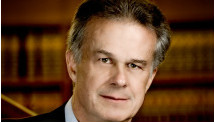BEIRUT (Reuters) - At least 65 people were found shot dead with their hands bound in the northern Syrian city of Aleppo on Tuesday in a "new massacre" in the near two-year revolt against President Bashar al-Assad, activists said.
Opposition campaigners blamed the government but it was impossible to confirm who was responsible. Assad's forces and rebels have been battling in Syria's commercial hub since July and both have been accused of carrying out summary executions.
U.N.-Arab League mediator Lakhdar Brahimi told the U.N. Security Council "unprecedented levels of horror" had been reached in Syria, and that both the government and rebels had committed atrocious crimes, diplomats said.
He appealed to the 15-nation council to overcome its deadlock and take action to help end the civil war in which Syria is "breaking up before everyone's eyes".
More than 60,000 people are estimated to have been killed in the war, the longest and deadliest of the revolts that began throughout the Arab world two years ago.
The U.N. refugee agency said the fighting had forced more than 700,000 people to flee. World powers fear the conflict could envelop Syria's neighbors including Lebanon, Jordan and Turkey, further destabilizing an already explosive region.
Opposition activists posted a video of at least 51 muddied male bodies alongside what they said was the Queiq River in Aleppo's rebel-held Bustan al-Qasr neighborhood.
The bodies had what looked like bullet wounds in their heads and some of the victims appeared to be young, possibly teenagers, dressed in jeans, shirts and trainers.
Aleppo-based opposition activists who asked not to be named for security reasons blamed pro-Assad militia fighters.
They said the men had been executed and dumped in the river before floating downstream into the rebel area. State media did not mention the incident.
The British-based Syrian Observatory for Human Rights, which says it provides objective information about casualties on both sides of Syria's war from a network of monitors, said the footage was evidence of a new massacre and the death toll could rise as high as 80.
"They were killed only because they are Muslims," said a bearded man in another video said to have been filmed in central Bustan al-Qasr after the bodies were removed from the river. A pickup truck with a pile of corpses was parked behind him.
STALEMATE
It is hard for Reuters to verify such reports from inside Syria because of restrictions on independent media.
Rebels are stuck in a stalemate with government forces in Aleppo - Syria's most populous city which is divided roughly in half between the two sides.
The revolt started as a peaceful protest movement against more than four decades of rule by Assad and his family, but turned into an armed rebellion after a government crackdown.
About 712,000 Syrian refugees have registered in other countries in the region or are awaiting processing as of Tuesday, the U.N. refugee agency said.
"We have seen an unrelenting flow of refugees across all borders. We are running double shifts to register people," Sybella Wilkes, spokeswoman for the U.N. High Commissioner for Refugees (UNHCR), told Reuters in Geneva.
The United Nations said it had received aid promises ahead of a donor conference in Kuwait on Wednesday where it is seeking $1.5 billion for refugees and people inside Syria. Washington announced an additional $155 million that its said brought the total U.S. humanitarian aid to the crisis to some $365 million.
Aid group Médecins Sans Frontières said the bulk of the current aid was going to government-controlled areas in Syria and called on donors to make sure they were even-handed.
MISSILES
In the eastern city of Deir al-Zor, insurgents including al Qaeda-linked Islamists captured a security agency after days of heavy fighting, according to an activist.
Some of the fighters were shown carrying a black flag with the Islamic declaration of faith and the name of the al-Nusra Front, which has ties to al Qaeda in neighboring Iraq.
The war has become heavily sectarian, with rebels who mostly come from the Sunni Muslim majority fighting an army whose top generals are mostly from Assad's Alawite sect, an offshoot of Shi'ite Islam. Assad has framed the revolt as a foreign-backed conspiracy and blames the West and Sunni Gulf states.
Fighting also took place in the northern town of Ras al-Ain, on the border with Turkey, between rebels and Kurdish militants, the Observatory said.
In Turkey, a second pair of Patriot missile batteries being sent by NATO countries are now operational, a German security official said.
The United States, Germany and the Netherlands each committed to sending two batteries and up to 400 soldiers to operate them after Ankara asked for help to bolster its air defenses against possible missile attack from Syria.
(Additional reporting by Sylvia Westall in Kuwait, Sabine Siebold in Berlin and Stephanie Nebehay in Geneva; Editing by Andrew Heavens and Robin Pomeroy)


